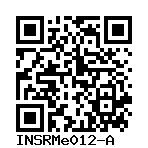STR-I-231-MTMX
INSRMe012-A
General
Cell Line |
|
| hPSCreg name | INSRMe012-A |
| Cite as: | INSRMe012-A (RRID:CVCL_C090) |
| Alternative name(s) |
STR-I-231-MTMX
|
| Cell line type | Human embryonic stem cell (hESC) |
| Similar lines |
|
| Last update | 3rd September 2022 |
| User feedback | |
Provider |
|
| Generator |
INSERM (INSRM)
Contact:
Ontogeny of primordial germ cells |
| Derivation country | France |
External Databases |
|
| Cellosaurus | CVCL_C090 |
| Wikidata | Q54970624 |
General Information |
|
| Publications | |
| * Is the cell line readily obtainable for third parties? |
Yes |
Donor Information
General Donor Information |
|
| Sex | male |
Phenotype and Disease related information (Donor) |
|
| Diseases | A disease was diagnosed.
|
| Disease associated phenotypes |
|
Ethics
| Alternatives to consent are available? | Yes |
| Alternatives to consent | |
| Alternative consent approval number | |
| How may genetic information associated with the cell line be accessed? |
hESC Derivation
| Embryo stage | Blastula with ICM and Trophoblast |
| PGD Embryo? |
Yes |
| ZP removal technique | Enzymatic |
Culture Conditions
| Surface coating | Gelatin | |||||||||
| Passage method | Mechanically | |||||||||
| CO2 Concentration | 5 % | |||||||||
| Medium |
Other medium:
Base medium: Knockout-DMEM
Main protein source: Knock-out serum replacement Serum concentration: 20 % Supplements
|
Characterisation
Analysis of Undifferentiated Cells
| Marker | Expressed | Immunostaining | RT-PCR | Flow Cytometry | Enzymatic Assay | Expression Profiles |
| DNMT3B |
Yes |
|
||||
| GABRB3 |
Yes |
|
||||
| GDF3 |
Yes |
|
||||
| POU5F1 (OCT-4) |
Yes |
|
||||
| SOX2 |
Yes |
|
||||
| TDGF1 |
Yes |
|
||||
| SSEA-1 |
No |
|
||||
| SSEA-4 |
Yes |
|
||||
| TRA 1-81 |
Yes |
|
Differentiation Potency
Microbiology / Virus Screening |
|
| HIV 1 | Negative |
| HIV 2 | Negative |
| Hepatitis B | Negative |
| Hepatitis C | Negative |
Genotyping
Karyotyping (Cell Line) |
|
| Has the cell line karyotype been analysed? |
Yes
46XY
Passage number: 12
|
Other Genotyping (Cell Line) |
|


Login to share your feedback, experiences or results with the research community.